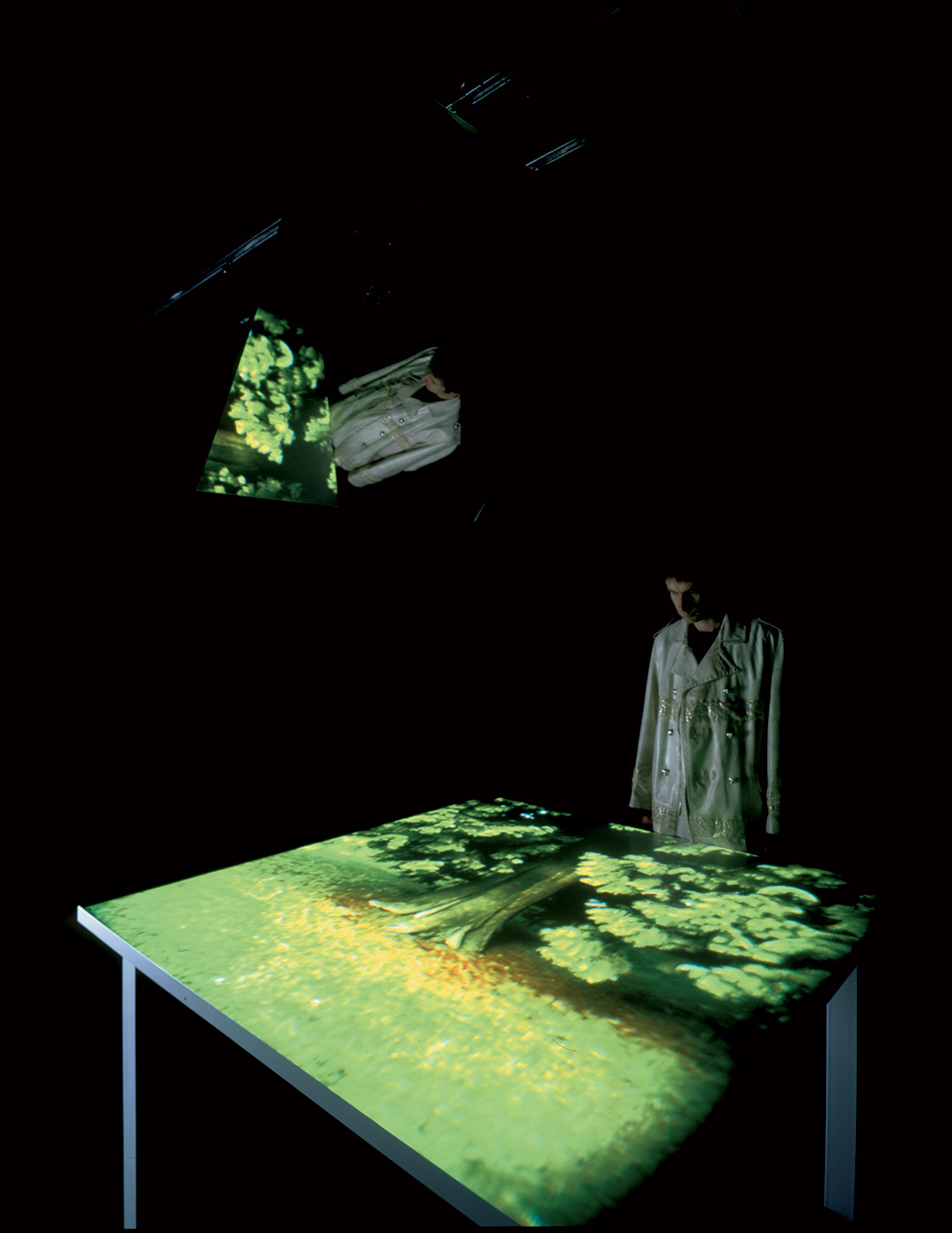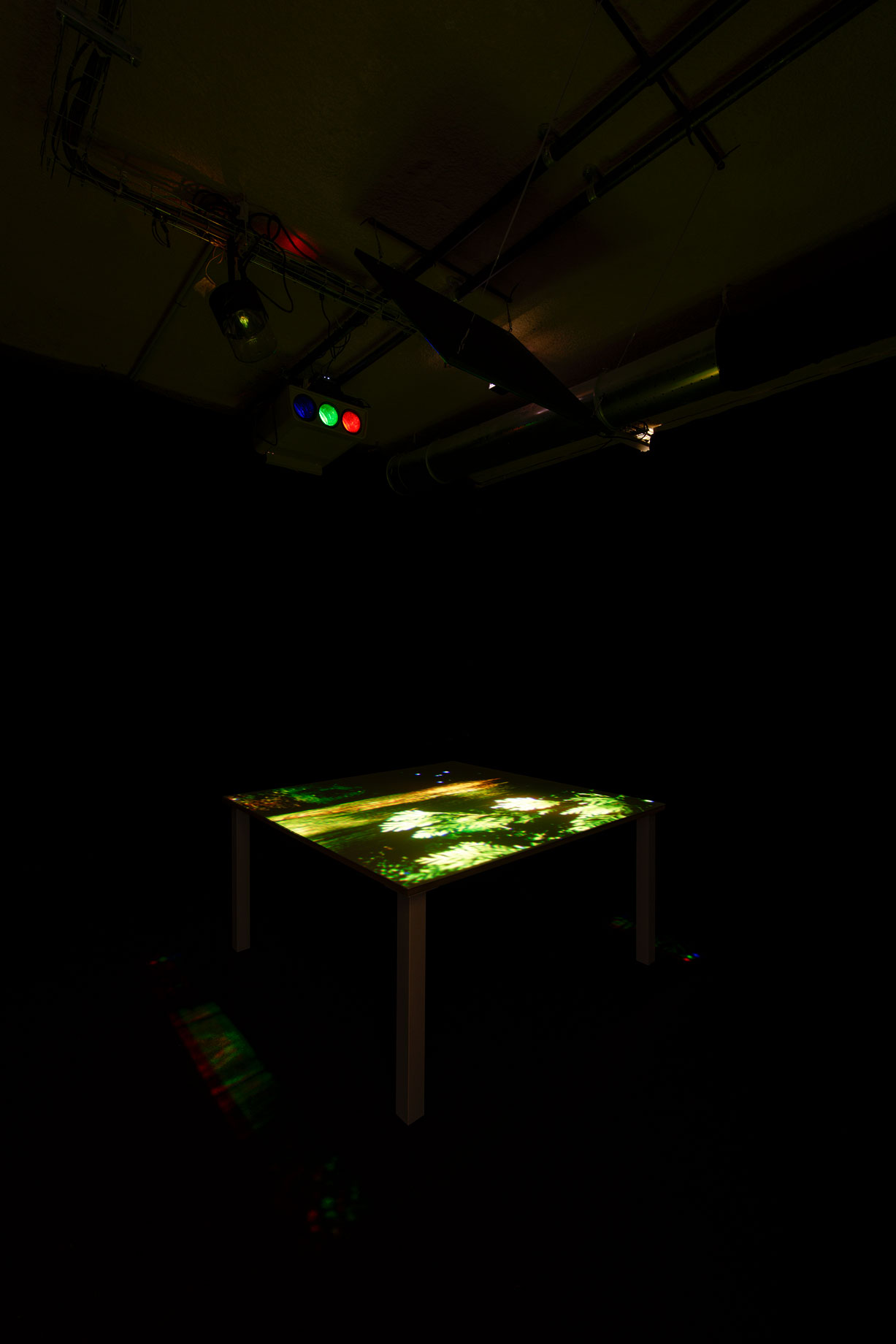Hill

Gary Hill
Reflex Chamber, 1996
Edition of 2 ex + 1 AP
Courtesy : l'artiste & Galerie In Situ-fabienne leclerc, Grand Paris

Gary Hill
Reflex Chamber, 1996
A room 15 feet (4,6 meters) square has been transformed into something akin to the internal chamber of a camera. It is completely black with a door that viewers close behind them. In the center is a 60x60x34-inches (1,52 meter x 1,52 meter x 86 centimeter) white table. The setup is one of research or perhaps a place where an operation or an experiment might take place.
An image/picture is projected and reflected off a large mirror mounted on the ceiling at a 45-degree angle down towards the surface of the table filling it edge to edge. The picture's orientation is open ended and changes. It is experienced topologically. Rather than a picture (window) to stand before and see in perspective, the image takes on a more physical presence. It rarely exists for more than a few seconds without being interrupted.
A spoken text, loud enough to fill the space, is broken up by a kind of accordion pattern of increasing and decreasing spaces of silences and incisions. All the words and parts of words remain but are always being pulled apart and pushed back together.
Coinciding with the duration of the speech, a strobe light flashes, sometimes singularly or as a continuous burst of extreme bright light, and obliterates the site of the image. The room completely lights up exposing the viewers present. Everything is thrown "outside" for a moment - people witness one another staring intently at a white table and suddenly one is completely in the dark with only an afterimage in their head. At times the strobed light brackets the beginning and end of each image segment, seemmingly pulsating the image off the table as if it were levitating.
The overall sense is that of a place where thought, heard physically as speech, intertwines, reacts and disturbs the meeting ground with the image and vice versa. There are gaps in the thought and in the seeing, but the gaps never become a rhythm - one is always thrown from the way that one has taken to construct a sense of place and meaning.
Catalogue Gary Hill, Selected Works + Catalogue raisonné, edition Kunstmuseum Wolfsburg, 2002